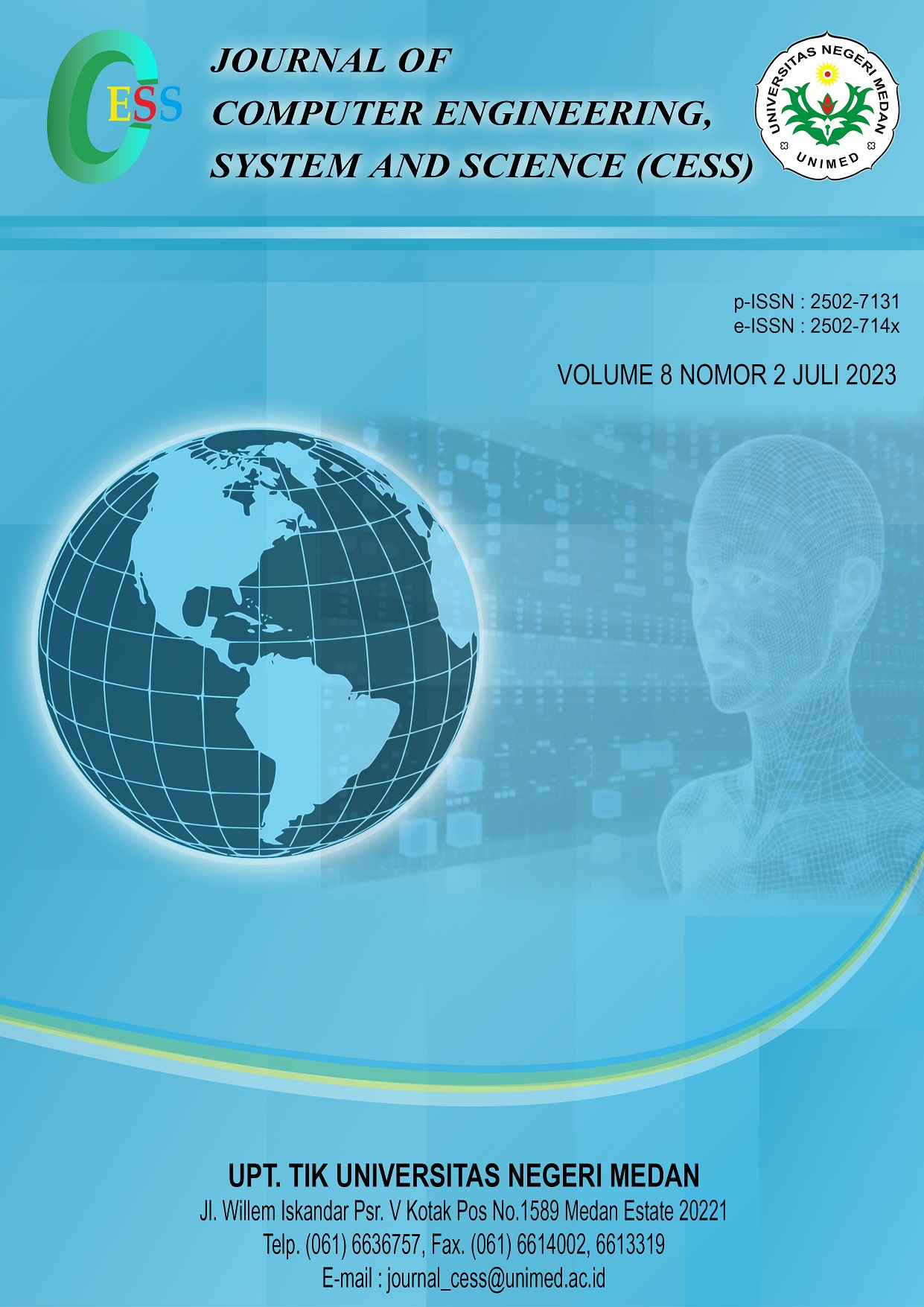Usability Evaluation Analysis on iKalbar Application Using Heuristic Evaluation Method, Performance Measurement, and User Experience Questionnaire (UEQ)
DOI:
https://doi.org/10.24114/cess.v8i2.48021Keywords:
Evaluasi Usability, Aplikasi iKalbar, Heuristic Evaluation, Performance Measurement, User Experience Questionnaire (UEQ)Abstract
Tingkat efektifitas dan efisiensi suatu aplikasi dapat mempengaruhi tingkat kepuasan pengguna dalam menggunakan suatu aplikasi, sehingga perlu dilakukan sebuah evaluasi. Aplikasi iKalbar merupakan aplikasi perpustakaan berbasis digital yang sebelumnya tidak pernah dilakukan evaluasi sehingga evaluasi ini berguna untuk meningkatkan user experience pengguna. Metode yang digunakan ialah Heuristic Evaluation, Performance Measurement, dan User Experience Questionnaire. Hasil penelitian ini menyebutkan jika terdapat 7 prinsip heuristic yang masuk kedalam skala minor usability atau perbaikan dalam kategori rendah. Nilai rata-rata tingkat efektifitas responden mahir sebesar 100% dan responden pemula 89%, sedangkan untuk nilai rata-rata tingkat efisiensi responden mahir mendapatkan hasil 100% dan responden pemula 26%. Hasil dari kuesioner UEQ menunjukkan jika skala kejelasan bernilai 1.13, Skala efisiensi bernilai 0.37. Skala ketepatan bernilai 1.11. Skala stimulasi bernilai 1.05 dan skala kebaruan bernilai 0.54.The level of effectiveness and efficiency of an application can affect the level of user satisfaction in using an application, so an evaluation is needed. The iKalbar application is a digital-based library application that has never been evaluated before, so this evaluation is useful for improving user user experience. The method used is Heuristic Evaluation, Performance Measurement, and User Experience Questionnaire. The results of this study state that there are 7 heuristic principles that are included in the minor usability scale or improvement in the low category. The average value of the effectiveness level of the expert respondents is 100% and the novice respondents are 89%, while the average value of the efficiency level of the expert respondents is 100% and the novice respondents are 26%. The results of the UEQ questionnaire show that if the attractiveness scale is 1.13, the efficiency scale is 0.37. The perspicuity scale is 1.11. The stimulation scale is 1.05 and the novelty scale is 0.54.References
M. C. Ngulum and A. D. Indriyanti, œEvaluasi Kualitas Website Simontasi Unesa Menggunakan Metode Webqual dan Importance Performance Analysis (IPA), J. Informatics Comput. Sci., 2020, doi: 10.26740/jinacs.v2n01.p38-42.
Y. Widayanti, œDigital Library Management, Libr. Libr. J., 2015.
J. Nielsen, œUsability inspection methods, Conf. Hum. Factors Comput. Syst. - Proc., vol. 1994-April, pp. 413“414, 1994, doi: 10.1145/259963.260531.
N. Alfiqie, M., Aknuranda, I. and Wardani, œEvaluasi Usability Pada Aplikasi UBER Menggunakan Pengujian Usability, J. Pengemb. Teknol. Inf. dan Ilmu Komput., 2018.
Ritawati and A. N. Fajar, œAnalysis usability and content in known system implementation, J. Theor. Appl. Inf. Technol., 2019.
M. Y. P. Mahendra, I. N. Piarsa, and D. Putra Githa, œGeographic Information System of Public Complaint Testing Based On Mobile Web (Public Complaint), Lontar Komput. J. Ilm. Teknol. Inf., 2018, doi: 10.24843/lkjiti.2018.v09.i02.p04.
J. Nielsen and R. Molich, œHeuristic evaluation of user interfaces, in Conference on Human Factors in Computing Systems - Proceedings, 1990. doi: 10.1145/97243.97281.
I. Almarashdeh and M. K. Alsmadi, œHow to make them use it? Citizens acceptance of M-government, Appl. Comput. Informatics, 2017, doi: 10.1016/j.aci.2017.04.001.
S. Herr, N. Baumgartner, and T. Gross, œEvaluating severity rating scales for heuristic evaluation, Conf. Hum. Factors Comput. Syst. - Proc., vol. 07-12-May-2016, pp. 3069“3075, 2016, doi: 10.1145/2851581.2892454.
R. F. A. Aziza, œAnalisa Usability Desain User Interface Pada Website Tokopedia Menggunakan Metode Heuristics Evaluation, J. Tekno Kompak, vol. 13, no. 1, p. 7, 2019, doi: 10.33365/jtk.v13i1.265.
M. Schrepp, A. Hinderks, and J. Thomaschewski, œConstruction of a Benchmark for the User Experience Questionnaire (UEQ), Int. J. Interact. Multimed. Artif. Intell., 2017, doi: 10.9781/ijimai.2017.445.
Downloads
Published
Issue
Section
License
Copyright (c) 2023 CESS (Journal of Computer Engineering, System and Science)

This work is licensed under a Creative Commons Attribution 4.0 International License.










